Visual interpretation Normal Reading Fiction Worksheets for Ages 3-9
5 filtered results
-
From - To
Explore our engaging "Visual Interpretation Normal Reading Fiction Worksheets," specially designed for children aged 3-9. These interactive resources help young learners enhance their reading comprehension and analytical skills through beautiful illustrations and relatable stories. Each worksheet encourages kids to interpret visuals, connect context, and develop critical thinking while fostering a love for reading. Perfect for teachers and parents, our user-friendly worksheets cater to various learning styles, making reading fun and effective. Dive into a world of imagination and creativity that supports literacy development at an early age. Unlock your child's potential with our thoughtfully crafted worksheets today!
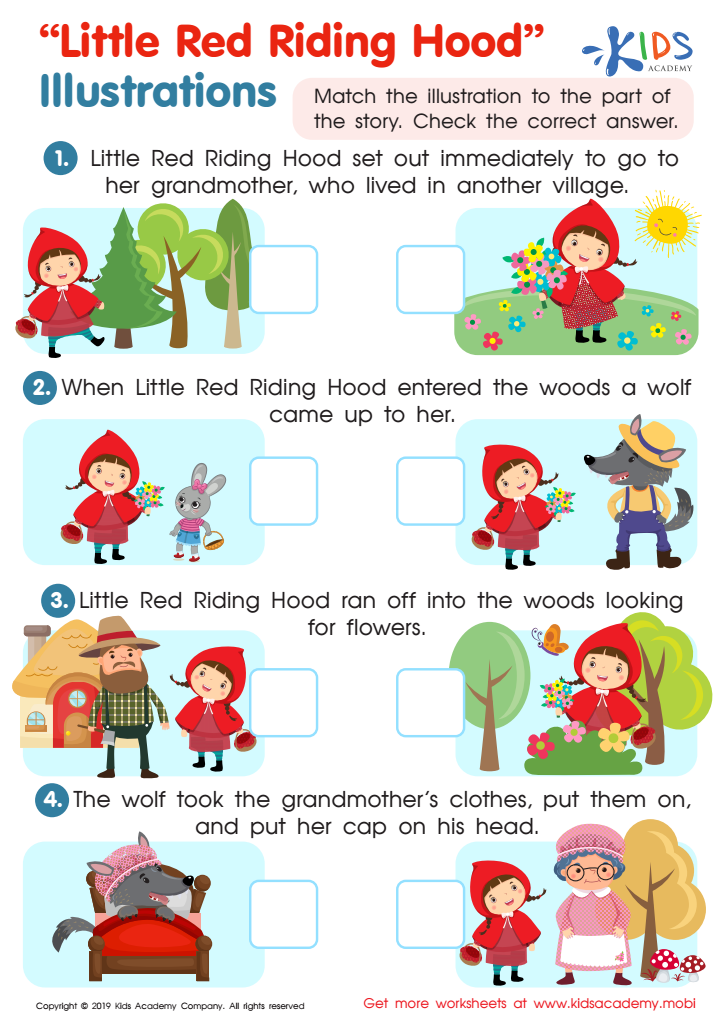

Little Red Riding Hood: Illustrations Worksheet
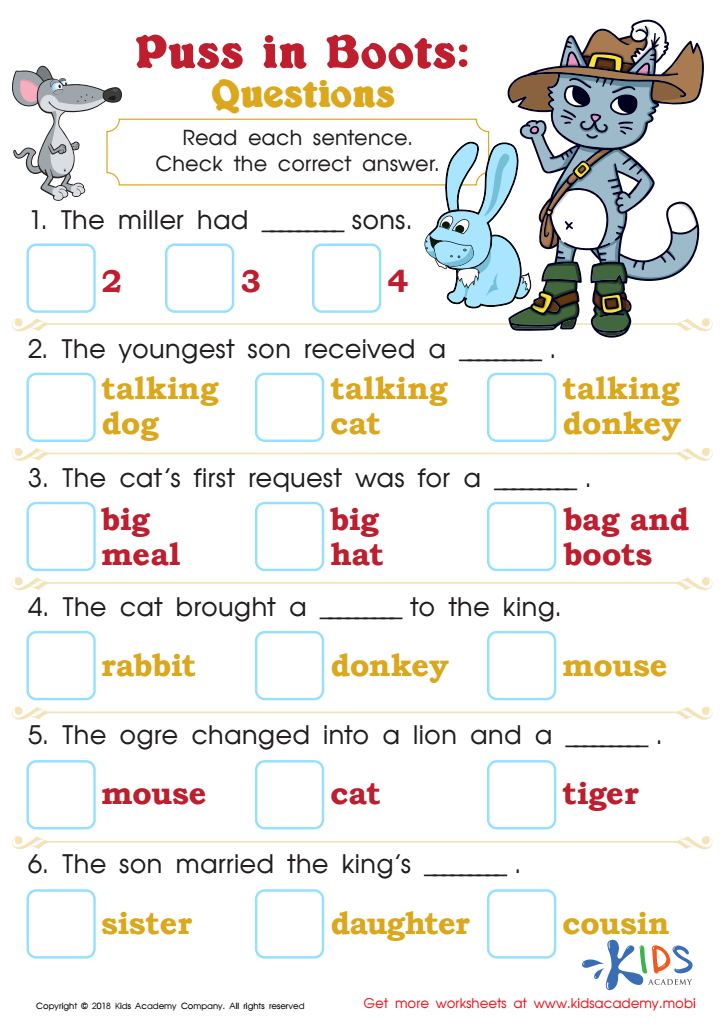

Puss in Boots: Questions Worksheet
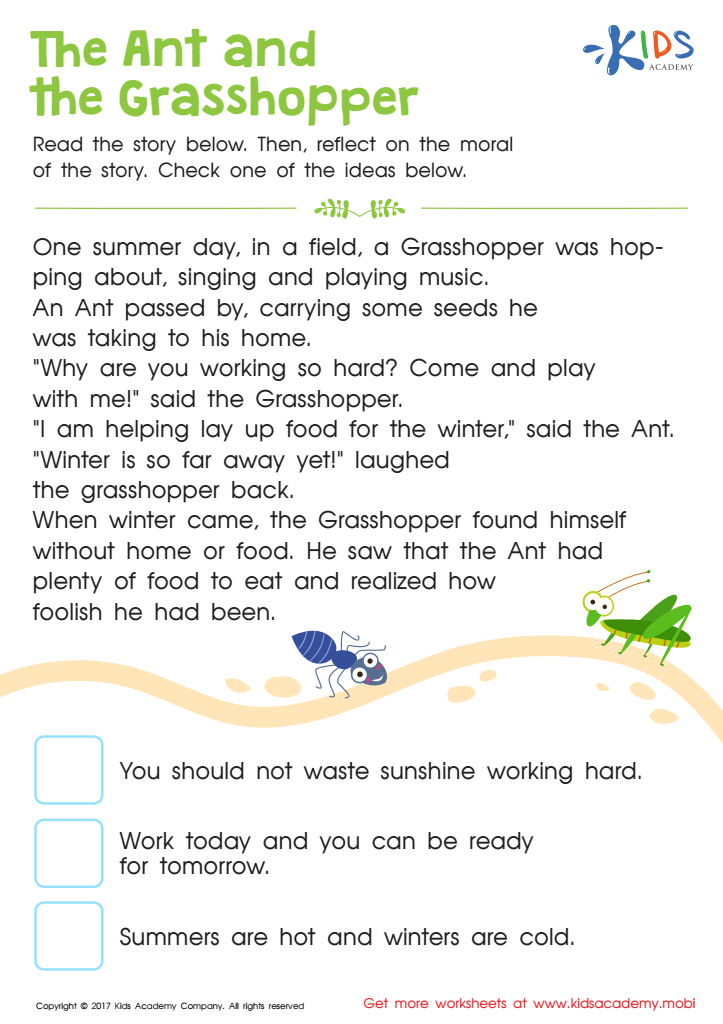

The Ant and The Grasshopper Printable
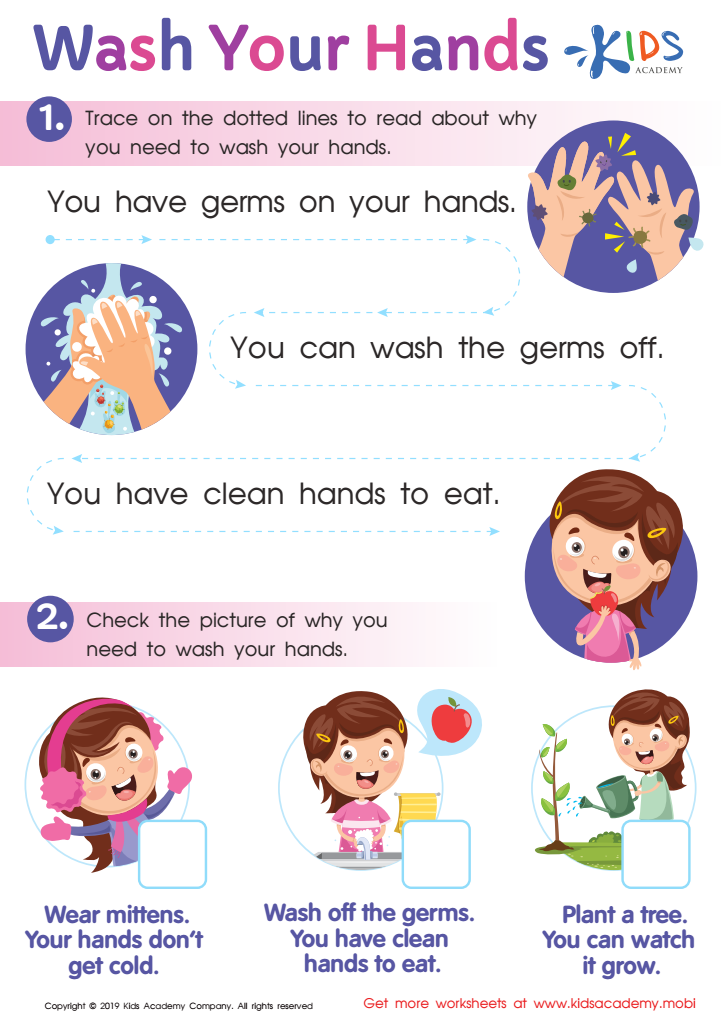

Wash Your Hands Worksheet
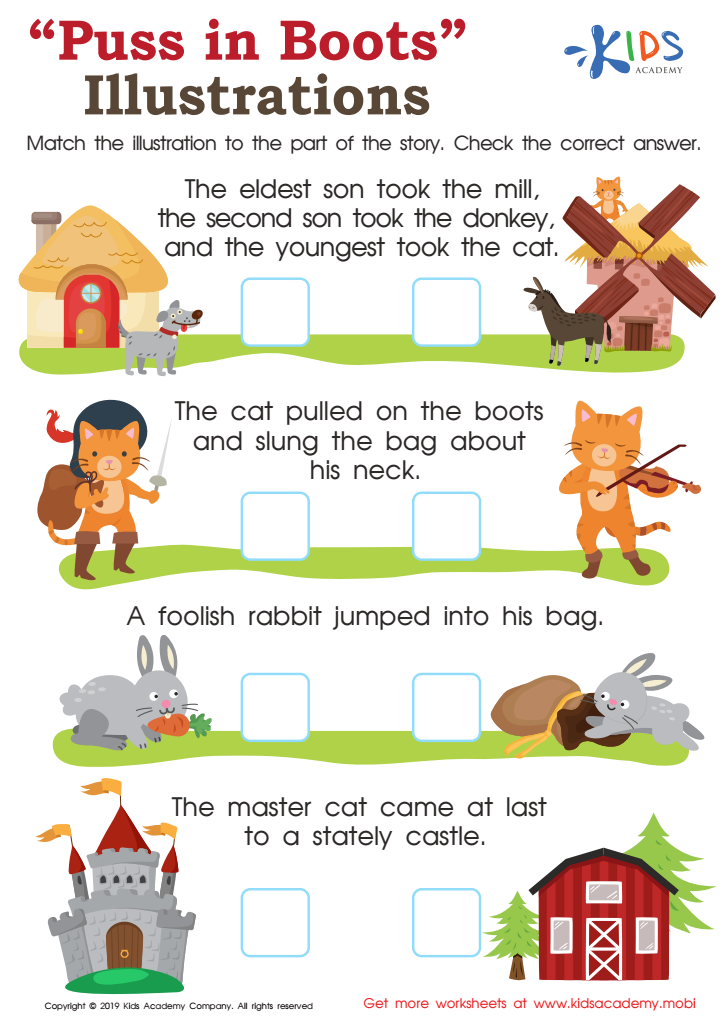

Puss in Boots Illustrations Worksheet
Visual interpretation in reading fiction for ages 3-9 is crucial for several reasons. First, young children are naturally drawn to images, making visual aids essential in engaging them with stories. This age group is developing critical cognitive and language skills; combining visuals with text not only enhances their understanding but also fosters a love for reading.
Visual cues can aid in comprehension, helping children decode stories and recognize emotions, settings, and character actions. This is particularly important in fiction, where narratives often convey complex ideas and feelings that may be challenging for early readers to grasp through text alone.
Furthermore, visual interpretation nurtures creativity and imagination. As children analyze illustrations while reading, they learn to infer, predict, and create mental images, developing their analytical and critical thinking skills.
For parents and teachers, emphasizing visual interpretation can foster a supportive reading environment, helping children connect with stories on multiple levels. It cultivates discussion, encourages questions, and allows for deeper engagement with the material. In essence, visual interpretation not only enhances literacy development but also enriches children's overall learning experiences, making reading a more enjoyable and multifaceted activity.
 Assign to My Students
Assign to My Students






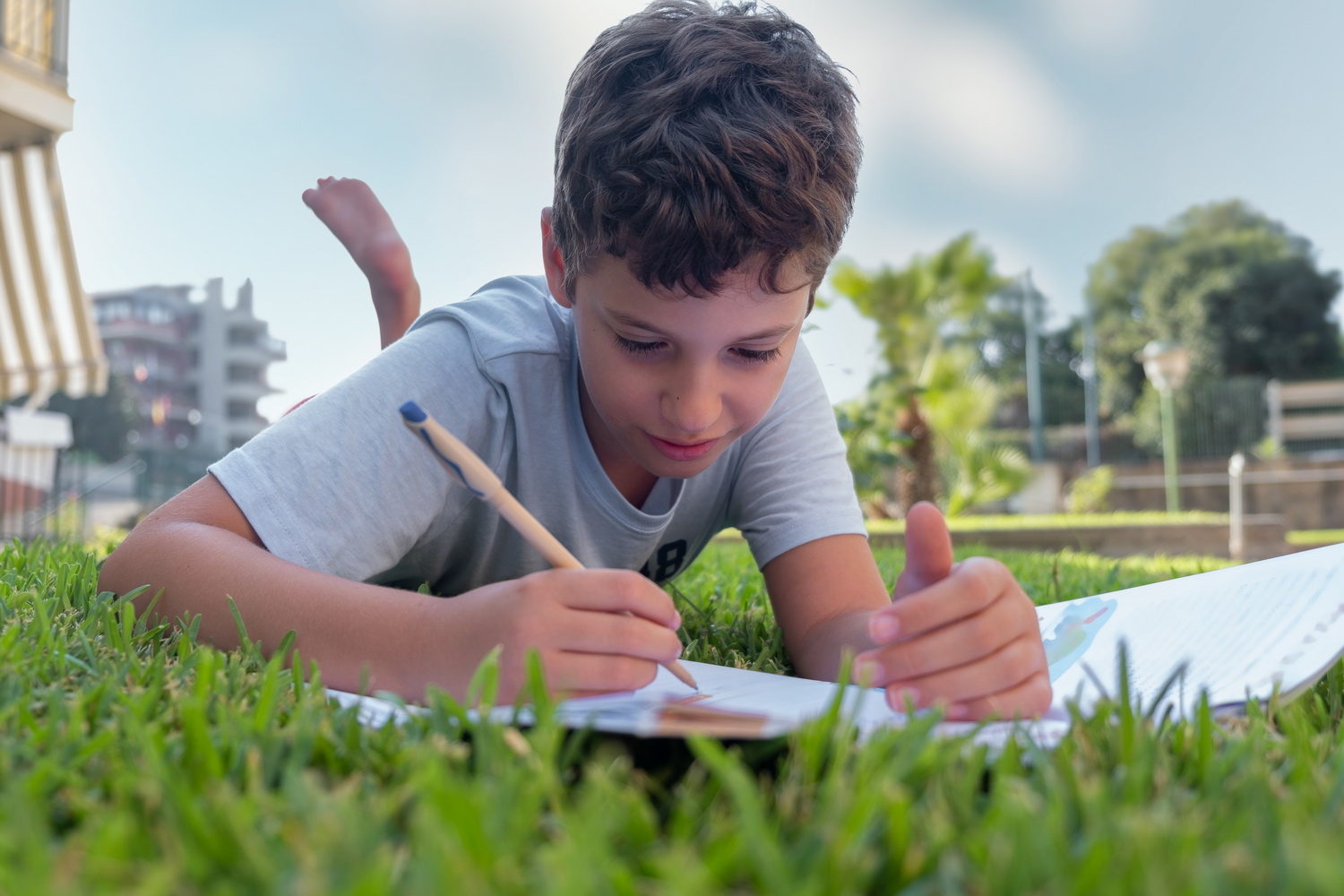
.jpg)
.jpg)












